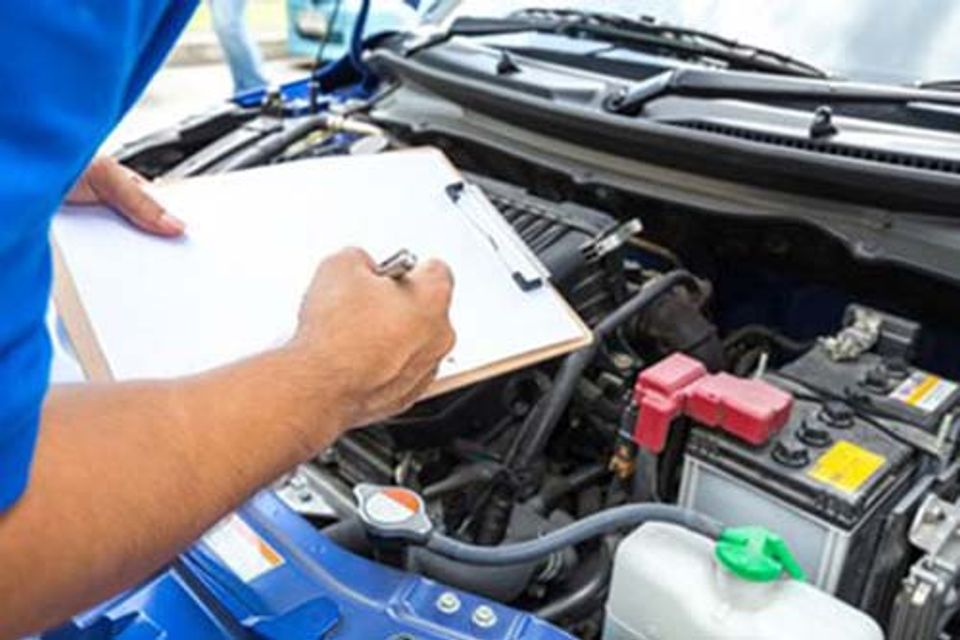Scheduled Maintenance Hot Springs, AR
What is Schedule Maintenance or Preventative Maintenance?
Regular Preventive Maintenance or Scheduled Maintenance is probably the single thing you can do as a car owner to keep your ride happy and save money on repairs in the future. However, not everyone agrees on what preventive maintenance is, what you should do, and when you should do it. Let’s clear that up, and give you some tips that’ll apply to any vehicle.
Anyone who’s ever worked on cars or spent a ton of money getting their car repaired will tell you: Don’t ignore Scheduled Maintenance. The basics, like changing your oil, checking your tire pressure, and getting scheduled inspections and work done are like getting regular checkups at the doctor. They keep you healthy and give you—and the experts—a chance to catch anything serious before it becomes a major problem. With your vehicle, that can save you thousands.
First, Read Your Owner’s Manual
Pay attention to your owner’s manual. Regardless of the vehicle you drive, your regular maintenance schedule is inside it, and you’ll never fall for old car myths like, “You should change your oil every 3,000 miles,” (unless of course, your manual says you should, and odds are it doesn’t). You will, however, discover how often your manufacturer really does suggest you change your oil (it can vary widely by vehicle), your filters, any drive or timing belts in your vehicle, and more. You’ll even find out whether you’re putting the right gas in your vehicle or whether you’re using the right kind of oil in the first place.
Seriously—you wouldn’t fire up a complicated piece of technology or a massive new home appliance without checking the manual to make sure you know what you’re doing. Most car lovers already know how important this is, but it’s still important even for people who don’t consider themselves interested in how their car works. If you’re using the wrong oil, for example, or filling a car that calls for higher octane fuel with the lowest octane stuff you can buy, you may run the risk of voiding your warranty, and worse, causing damage that’ll cost more to fix than you’d save by using the cheap stuff.
Preventive Maintenance Every Vehicle Needs
When we covered the ways you can save serious money on car repair, more than a few people pointed out that preventive maintenance is probably one of the biggest ways you can save money—not actively, but in the long term. Spending a little money now on these basics will save you from more costly repairs later on:
Ten Ways to Save Serious Money on Car Repairs
If you drive, there’s probably little you hate more than getting your car repaired.
1. Do your own inspection.
It’s basic, but give your car a once-over periodically so you catch anything that looks out of the ordinary. Make sure all your lights are working. Check the air pressure in your tires every month or so (and buy a cheap tire air pressure gauge and keep it in the glove compartment). Doing so is good for your tires, gets you better mileage, and saves you money in gas if you discover that the pressure is off. Listen for any strange sounds, inside and out. Make sure your tires have enough tread. You can use a penny to do it, or look out for the wear indicators on the tire treads. If anything’s out of the ordinary, don’t ignore it.
2. Learn to check your fluids.
Even if you don’t ever learn how to change your antifreeze, power steering, coolant, or even your wiper fluid (although seriously, don’t let someone charge you to change wiper fluid), you should learn how to check those fluid levels. In some cases, you can see the tank level directly, but most have gauges or dipsticks you can pull out to check current levels against a notch that indicates optimal levels. Even if your owner’s manual doesn’t have much to say about checking your transmission fluid or antifreeze, don’t be afraid to open the hood and see if you can find it. If you’re running low, add more (if you can) or get it changed. Most importantly, never ignore a leak.
3. Inspect and get your timing and serpentine belts replaced when necessary.
Many people will tell you to get your timing belt replaced every 60,000 miles or so, and your serpentine belt replaced every 40,000 miles, give or take. Again, your owner’s manual will offer real numbers for your type of vehicle. If you can’t find the manual, look around online. You’ll probably find the actual recommendation for your car. Use it as a guideline, and ask your mechanic to inspect the belts when it gets time to replace them mileage-wise. If they’re still in good shape, don’t bother, but if they’re worn out, get them replaced before they fail. If you wait and those belts do fail, you’ll break down, and the damaged belt can damage other accessories, making the repair even more expensive.
4. Check your oil and get it changed regularly.
Whether your car has a dipstick to check the oil’s color and oil level or the dipstick has been replaced with an electronic gauge, you should know how to check it. Knowing the difference between clean oil and muddy, murky oil will save you a ton of unnecessary changes and gives you a way to tell if something’s wrong with your engine (e.g. the oil looks terrible but you just had it changed). It’s hard to make a universal recommendation for how frequently you should change your oil, but the answer is—as we mentioned—in your owner’s manual. Don’t just blindly follow the 3,000-mile myth though—for most vehicles it can be as high as 10,000 miles, depending on the oil your vehicle calls for (something else that’s in the manual).
5. Check your battery and clean the contacts (if necessary).
Most batteries these days don’t require much in the way of maintenance, but you should know where it is and check it to make sure it’s not leaking and there’s no mineral or another buildup on the contacts. If there is, clean it off with a battery cleaning brush. It will set you back a couple of bucks at any auto parts or department store. Buy one and keep it in the trunk. While you’re at it, consider buying a cheap battery tester or jump starter. You’ll never need to call someone or wait for AAA (or a friendly passer-by) to give you a jump.
6. Replace your windshield wipers when the view gets streaky.
It may seem silly, but I’ve known several people who just ignored their wipers until they got them replaced as part of a bigger job. Wipers are cheap and easy to replace yourself. Don’t wait until you can barely see through your windshield. Your visibility is important, and you wouldn’t wait until you saw an optometrist to clean your glasses, would you? While you’re at it, give your windshield a good cleaning inside and out—if it’s hard to see, the problem may be inside, not out.
7. Replace your cabin air filter.
Replacing a cabin air filter is probably one of the easiest things you can do to keep your car comfortable. Most vehicles make the cabin air filter easily accessible and replacing it is as easy as opening a box. You can get a fitting filter at any auto parts store. It may not be critical to your car’s operation, but it’s easy, it makes the ride more pleasant, and it’s a repair you’ll never have to pay someone else to do.
8. Replace your engine air filter.
Getting to the engine air filter may be a little trickier depending on the vehicle you have, but replacing it regularly is important. Your owner’s manual will give you a mileage estimate for how frequently you should replace your engine air filter, but if you can get to it, check it. If it’s dirty, replace it. If you drive a ton, especially in stop-and-go traffic or have a long commute, your engine air filter may get dirtier faster than someone who drives open roads or only drives around on the weekends.
9. Get your tires rotated and balanced, and your alignment checked.
Your manual will tell you how often to do this, and it’s important to do to make sure your tires wear evenly and your car drives smoothly. You can make your tires—which are expensive to replace all at once, by the way, take it from someone who’s done it several times—last much longer by getting them rotated and balanced. Your alignment is just as important. If you’re fighting your car to keep it straight, that’s a bad situation that can be easily corrected.
10. Change your spark plugs.
If your spark plugs are worn out or covered in the buildup, your engine isn’t working efficiently. That can cost you money in fuel for one, but it can also lead to a breakdown. It may sound daunting, but in some cases checking and replacing them isn’t that difficult. If you don’t feel like doing it yourself (or it’s a big and complicated job for your vehicle), follow your manual’s recommendation and get them changed regularly—for most standard copper spark plugs and vehicles, that’s around 30,000 miles (but again, it varies – some iridium plugs can last up to 100,000 miles).
We Are Here To Help!
These are just a few things that every vehicle needs, and almost all of them are things you can do yourself or bring your car in and we will do it for you. We can’t stress enough the importance of checking your owner’s manual for anything we may have overlooked here, or anything specific to your vehicle. If you don’t have your manual, you can find it pretty easily online.


